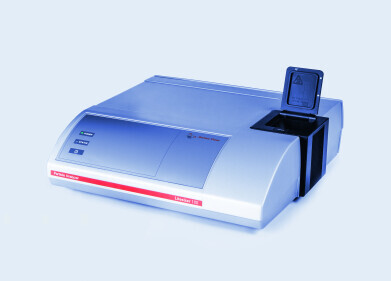Laboratory Products
An Introduction to Carbon Dating
Oct 05 2022
Archaeologists and palaeontologists aren’t the only experts that rely on carbon dating. The method is also an invaluable tool for forensic scientists. From determining age at the time of death to pinpointing the year of fatality, analysing carbon levels in human tissue can help forensic scientists identify human remains and solve crimes.
Read on as we take a closer look at how carbon dating is used for forensic science, as well as other applications.
How carbon dating works
Carbon dating is founded on the principle that all living organisms absorb radioactive carbon, also known as carbon-14, over time. When an organism dies, carbon-14 levels slowly decline at a steady pace. Isotopic measurements are used to analyse carbon-14 levels and calculate how much time has passed since the organism died.
As well as human remains, carbon dating can be used to date objects such as the Dead Sea Scrolls. The ancient manuscripts were written on parchment, which was once part of a living organism and therefor contained carbon-14.
Carbon dating and forensic science
Advances in carbon dating have made the technique a valuable tool for forensic scientists, used alongside methods like isotope detection. Specifically, modern carbon dating methods allow scientists to determine how old human remains are. Data can be used to find out more about the remains and link evidence to unsolved crimes. When combined with other evidence sourced via methods like glass analysis, carbon dating can be used to strengthen cases.
As always, digital technologies make analysis faster, easier and more accurate. Find out more about advances in Artificial Intelligence (AI), data management and advanced analytics software in 'A three-step plan for digital transformation.'
Busting art crimes with carbon dating
In the art realm, carbon dating is used to identify forged paintings and incriminate those responsible. A recent article published in the journal Forensic Science International explores how the technique played a central role in a French police investigation led by the Central Office for the Fight against Illicit Trafficking in Cultural Property (OCBC).
Lucile Beck, a local heritage scientist, led the team. Together, they analysed radiocarbon levels in paintings claiming to be original Pointillist and Impressionist pieces. Rather than being created at the beginning of the 20th century, the paintings were dated to the 1950s.
Fighting the ivory trade with carbon dating
In the wildlife protection sector, carbon dating is being used to learn more about African elephant populations and the threat posed by poachers. A recent article published in Forensic Science International maintains that carbon dating has a critical role to play in the fight against poaching and illegal ivory.
“Indeed, the absolute dating of the ivory allows, in forensics practice, to establish whether a determined sample or object was obtained and imported illegally, violating the international trade ban,” reads the article.
Carbon dating isn’t the only tool used by forensic scientists. Find out more about other cutting-edge techniques, including DNA phenotyping to predict physical characteristics such as eye colour and face shape, in our complete guide, ‘8 Advances in Forensic Science’.
Digital Edition
Lab Asia 31.2 April 2024
April 2024
In This Edition Chromatography Articles - Approaches to troubleshooting an SPE method for the analysis of oligonucleotides (pt i) - High-precision liquid flow processes demand full fluidic c...
View all digital editions
Events
Apr 28 2024 Montreal, Quebec, Canada
May 05 2024 Seville, Spain
InformEx Zone at CPhl North America
May 07 2024 Pennsylvania, PA, USA
May 14 2024 Oklahoma City, OK, USA
May 15 2024 Birmingham, UK



.jpg)














